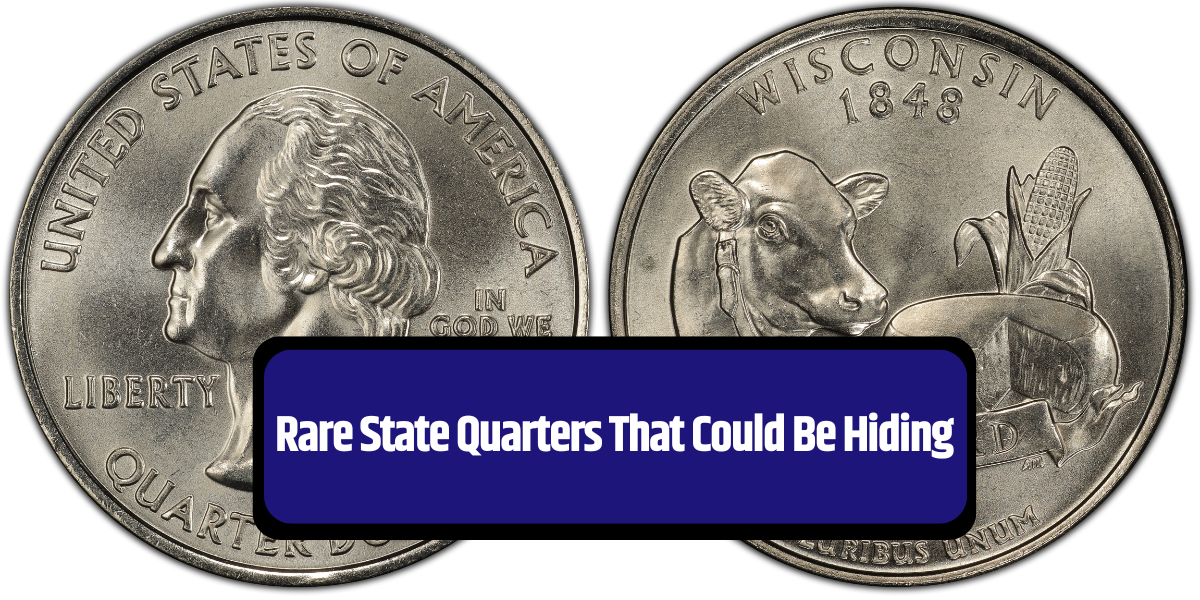The U.S. State Quarter program, launched in 1999, transformed everyday currency into a collector’s dream by honoring American heritage. While most quarters remain worth their face value, certain rare variations hold immense value due to unique characteristics. These hidden gems can fetch thousands of dollars, making them highly sought-after by numismatists and casual collectors alike. Here’s how to identify these valuable coins and what makes them so special.
Factors Influencing Quarter Value
Several factors contribute to a state quarter’s worth. Understanding these is crucial for spotting valuable coins:
- Minting Errors: Flaws during the minting process, such as cracks or doubling, significantly increase value.
- Limited Production: Quarters produced in smaller quantities tend to be more desirable.
- Condition: Coins in pristine, uncirculated condition often command the highest prices.
Most Valuable State Quarters
Here’s a look at some of the most valuable state quarters and what makes them extraordinary.
Delaware “Spitting Horse” (1999)
The first coin in the series, this quarter features a die crack near the horse’s mouth, resembling a “spitting” effect. In mint condition, this error can be worth up to $5,000.
Pennsylvania Double Die (1999)
Known as the “Double Die Reverse,” this quarter displays a doubling error in the reverse lettering. With values up to $1,000, this error is relatively easy to spot with close inspection.
New Hampshire “Hanging Old Man” (2000)
A die crack near the “Old Man of the Mountain” formation creates an unusual visual resembling a hanging rope. Depending on its prominence, this quarter can fetch up to $500.
South Carolina Doubled Text (2000)
This coin shows doubling in the word “South.” While less valuable than others, pristine examples can still reach $250.
Wisconsin “Extra Leaf” (2004)
This famous quarter features two variations:
- Extra High Leaf
- Extra Low Leaf
Both display an additional leaf on the corn stalk, making them highly collectible and valued up to $1,500.
Minnesota Double Die (2005)
Doubling in the background trees makes this quarter unique. Depending on condition, its value can reach $300.
Colorado “Cud Error” (2006)
A die crack along the mountain range creates an illusion of an extra peak. This error can be worth up to $250 in mint condition.
Hawaii Double Die (2008)
Doubling in the state name makes this quarter a favorite among collectors, with values climbing as high as $500.
District of Columbia “Ellington Error” (2009)
This quarter features a misspelling of Duke Ellington’s name. In uncirculated condition, it can command up to $1,000.
Tips for Identifying Valuable Quarters
To spot these treasures, follow these steps:
- Inspect Coins Carefully: Examine the quarters from the specific years mentioned above for signs of errors.
- Use Magnifying Tools: Magnifying glasses or microscopes can help detect subtle minting mistakes.
- Preserve Quality: Handle coins by their edges to avoid scratches and store them in protective holders.
Best Places to Find Rare Quarters
- Pocket Change: Rare quarters still circulate, making everyday transactions a potential goldmine.
- Bank Rolls: Request rolls of quarters from your bank to search for valuable variations.
- Coin Shops and Shows: These venues are excellent for both purchasing and verifying rare coins.
- Estate Sales and Collections: Hidden treasures often surface in old collections or estates.
Protecting and Verifying Your Finds
If you believe you’ve discovered a valuable quarter, take these precautions:
- Handle with Care: Avoid damage by holding coins by their edges.
- Use Protective Holders: Store coins in coin flips or holders to prevent wear.
- Seek Professional Grading: Certification from a trusted grading service ensures authenticity and value.
Selling Valuable Quarters
When you’re ready to sell, consider these options:
- Coin Dealers: Experienced buyers who can offer appraisals and fair prices.
- Online Auctions: Platforms like eBay attract competitive bids from collectors worldwide.
- Coin Shows: These events provide opportunities to network and sell directly to enthusiasts.
- Private Collectors: Direct sales often yield the highest returns.
The U.S. State Quarter program has added an exciting dimension to coin collecting, with unique errors and variations transforming ordinary quarters into valuable collectibles. Whether you’re a seasoned numismatist or a curious enthusiast, keep an eye out for these hidden gems—you never know when a common quarter might turn into a small fortune.

